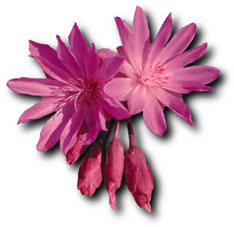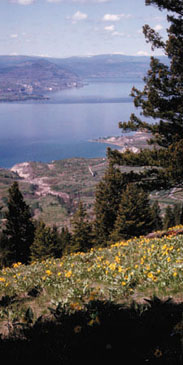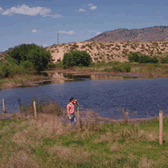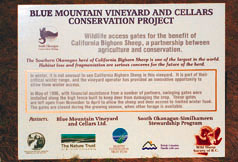|
(published
1998)
Habitat Atlas for Wildlife at Risk
Land Trusts and Private Land Stewardship
What is Stewardship?
 The
term "stewardship" is used to mean the responsible
and careful use of the natural environment around us.
Stewardship programs encourage landowners to manage
their lands in ways that maintain, restore or enhance
the diversity of native plants and wildlife. The
term "stewardship" is used to mean the responsible
and careful use of the natural environment around us.
Stewardship programs encourage landowners to manage
their lands in ways that maintain, restore or enhance
the diversity of native plants and wildlife.
Private land stewardship can have many dimensions.
Stewardship initiatives can focus on a particular species
or habitat, or an entire watershed. Activities can involve
small or large properties, from backyards to rural residential
acreages, farms and ranches. Stewardship can involve
one landowner or many landowners who share a natural
feature such as a stream.
Conservation stewardship involves caring for the natural
environment and taking responsibility for its well-being.
Programs In Our Area
 The
South Okanagan-Similkameen Stewardship Program (SOS
Stewardship) was set up in 1994 by the Nature Trust
of British Columbia, the Habitat Conservation Trust
Fund and Ministry of Water, Land and Air Protection
to help private landowners protect and enhance natural
areas on their land. The
South Okanagan-Similkameen Stewardship Program (SOS
Stewardship) was set up in 1994 by the Nature Trust
of British Columbia, the Habitat Conservation Trust
Fund and Ministry of Water, Land and Air Protection
to help private landowners protect and enhance natural
areas on their land.
Land Trusts
Land trusts are private, non-profit societies created
to acquire and hold land for the benefit of the community.
They are the fastest-growing part of the conservation
movement in North America.
To preserve land for farm and conservation purposes,
trusts acquire land or development rights through donations
and bequests. Several land trusts are protecting land
in British Columbia.
The recently formed Land Trust Alliance of British
Columbia has been incorporated to provide education,
communication, services and leadership to helps member
land trusts, conservation groups and the general public
to protect, and rehabilitate natural and cultural heritage
areas in British Columbia.
The Role of Non-Government Organizations (NGOs)
Community organizations and groups have a critical
role to play in any conservation strategy. They are
often the first to tell governments when an environmental
situation has reached a critical stage, and can do many
things that governments cannot. NGOs can acquire land
that is critical for wildlife, mobilizing the public
in fund-raising campaigns to do so.

Fencing to prevent
livestock trampling sensitive vegetation at the
Osoyoos Oxbows. This fencing project in the South
Okanagan Wildlife Management area was completed
with the help of nongovernmental organizations such
as Habitat Conservation Trust Fund and Ducks Unlimited.
|
The Okanagan Similkameen Parks Society
(OSPS) became the first NGO to really get involved
in South Okanagan conservation issues in 1960s when
it bought two blocks of land near Vaseux Lake. It
later sold them to the Canadian Wildlife Service,
consolidating that agency's commitment to conservation
in the Okanagan. The OSPS also carried out a successful
campaign of public education and political lobbying
that resulted in the designation of two large provincial
parks at the northern and western edges of the South
Okanagan: Cathedral Provincial Park and Okanagan
Mountain Provincial Park. |
The Nature Trust of British Columbia
is another NGO that has played a key role in South Okanagan
conservation. The Trust was established in 1971 to promote
and support the conservation of ecologically significant
areas in the Province. Recognizing the unique nature
of the area, it initiated the South Okanagan Critical
Areas Program in 1989. This Program provided the foundation
for the South Okanagan Conservation Strategy, a five-year
program of planning and research, including the production
of the Habitat Atlas for Wildlife at Risk. In addition,
the Trust has acquired 1400 hectares of conservation
lands, in partnership with the Wildlife Branch, the
Habitat Conservation Trust Fund and the Nature Conservancy
of Canada at White Lake and Vaseux Lake.
The Role of Private Landowners
 Private
land is key to any realistic conservation strategy in
the South Okanagan-Similkameen. Private holdings make
up more than one third of the dry grasslands and valley
bottom wetlands that together make the valley such a
special place. It is not only impractical, but essentially
impossible, to purchase all properties that contain
critical wildlife habitat; it is also unnecessary. A
successful program of voluntary landowner stewardship
could achieve similar results. Private
land is key to any realistic conservation strategy in
the South Okanagan-Similkameen. Private holdings make
up more than one third of the dry grasslands and valley
bottom wetlands that together make the valley such a
special place. It is not only impractical, but essentially
impossible, to purchase all properties that contain
critical wildlife habitat; it is also unnecessary. A
successful program of voluntary landowner stewardship
could achieve similar results.
Stewardship programs provide information to landowners
about conservation management techniques and practical
assistance for special projects. They also give landowners
information on economic incentives to assist conservation
and options such as conservation covenants, that ensure
the environmental value of the land will be retained
even if it is sold.
|